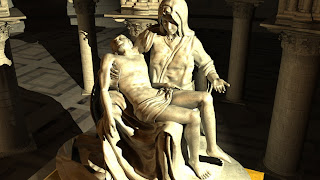**********HalloWeEn DaY**********
Jack-o'-lantern
Halloween (or Hallowe’en) is an international holiday celebrated on the evening of October 31; today it is often celebrated in the morning and afternoon as well. Halloween activities include trick-or-treating, ghost tours, bonfires, costume parties, visiting haunted attractions, carving jack-o'-lanterns, reading scary stories, and watching horror movies. Irish and Scottish immigrants carried versions of the tradition to North America in the nineteenth century. Other western countries embraced the holiday in the late twentieth century. Halloween is celebrated in several countries of the Western world, most commonly in the United States, Canada, Ireland, Puerto Rico, Japan, Australia, United Kingdom, and at times in parts of New Zealand. In Sweden the All Saints' official holiday takes place on the first Saturday of November.History
Halloween has its origins in the ancient Celtic festival known as Samhain (Irish pronunciation: [ˈsˠaunʲ]; from the Old Irish samain).[1] The festival of Samhain is a celebration of the end of the harvest season in Gaelic culture, and is sometimes [2] regarded as the "Celtic New Year".[3] Traditionally, the festival was a time used by the ancient Celtic pagans to take stock of supplies and slaughter livestock for winter stores. The ancient Gaels believed that on October 31, now known as Halloween, the boundary between the alive and the deceased dissolved, and the dead become dangerous for the living by causing problems such as sickness or damaged crops. The festivals would frequently involve bonfires, into which bones of slaughtered livestock were thrown. Costumes and masks were also worn at the festivals in an attempt to mimic the evil spirits or placate them.
History of name
The term Halloween is shortened from All Hallows' Even (both "even" and "eve" are abbreviations of "evening", but "Halloween" gets its "n" from "even") as it is the eve of "All Hallows' Day",[6] which is now also known as All Saints' Day. It was a day of religious festivities in various northern European Pagan traditions,[7] until Popes Gregory III and Gregory IV moved the old Christian feast of All Saints' Day from May 13 (which had itself been the date of a pagan holiday, the Feast of the Lemures) to 1st November. In the ninth century, the Church measured the day as starting at sunset, in accordance with the Florentine calendar. Although All Saints' Day is now considered to occur one day after Halloween, the two holidays were, at that time, celebrated on the same day. Liturgically, the Church traditionally celebrated that day as the Vigil of All Saints, and, until 1970, a day of fasting as well. Like other vigils, it was celebrated on the previous day if it fell on a Sunday, although secular celebrations of the holiday remained on the 31st. The Vigil was suppressed in 1955, but was later restored in the post-Vatican II calendar.
Symbols
The carved pumpkin, lit by a candle inside, is one of Halloween's most prominent symbols in America, and is commonly called a jack-o'-lantern. Originating in Europe, these lanterns were first carved from a turnip or rutabaga. Believing that the head was the most powerful part of the body containing the spirit and the knowledge, the Celts used the "head" of the vegetable to frighten off any superstitions.[8] The name jack-o'-lantern can be traced back to the Irish legend of Stingy Jack,[9] a greedy, gambling, hard-drinking old farmer. He tricked the devil into climbing a tree and trapped him by carving a cross into the tree trunk. In revenge, the devil placed a curse on Jack, condemning him to forever wander the earth at night with the only light he had: a candle inside of a hollowed turnip. The carving of pumpkins is associated with Halloween in North America,[10] where pumpkins were readily available and much larger, making them easier to carve than turnips. Many families that celebrate Halloween carve a pumpkin into a frightening or comical face and place it on their home's doorstep after dark. In America the tradition of carving pumpkins is known to have preceded the Great Famine period of Irish immigration. The carved pumpkin was originally associated with harvest time in general in America and did not become specifically associated with Halloween until the mid-to-late 19th century.
The imagery surrounding Halloween is largely an amalgamation of the Halloween season itself, nearly a century of work from American filmmakers and graphic artists,[11] and a rather commercialized take on the dark and mysterious. Halloween imagery tends to involve death, magic, or mythical monsters. Traditional characters include ghosts, ghouls, witches, owls, crows, vultures, pumpkin-men, black cats, spiders, goblins, zombies, mummies, skeletons, and demons.[12]
Particularly in America, symbolism is inspired by classic horror films, which contain fictional figures like Frankenstein's monster and The Mummy. Elements of the autumn season, such as pumpkins and scarecrows, are also prevalent. Homes are often decorated with these types of symbols around Halloween.
















